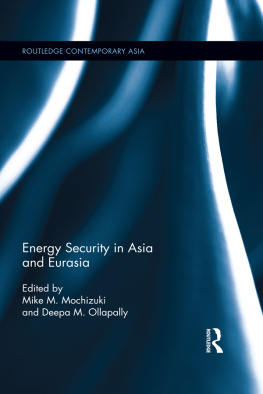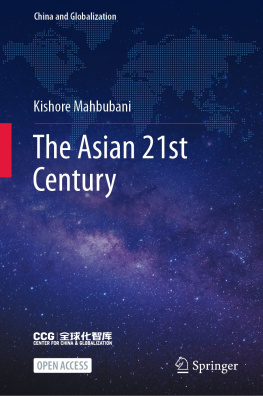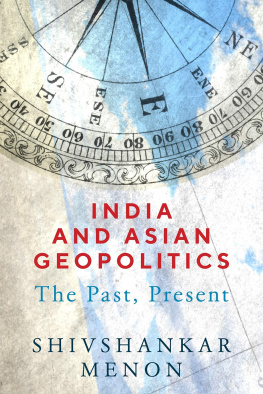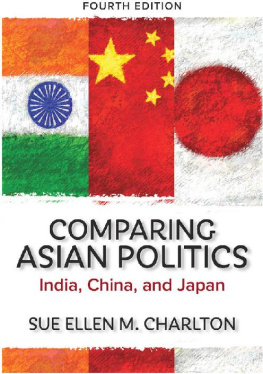U.S. President Barack Obama must face up to the qualitative reordering of power under way in the Asia-Pacific, with tectonic shifts challenging strategic stability. The impact of such shifts on U.S. foreign policy will be accentuated by Americas own challenges, including economic troubles and the two separate wars overseas. Such challenges dictate greater U.S.-China cooperation to ensure both continued large Chinese capital inflows and Beijings political support on contentious issues ranging from North Korea and Burma to Pakistan and Iran. Such calculations, in turn, are likely to have a bearing on Americas dual role in Asia as a resident power, and as the straddle power across the Asia-Pacific, to quote Defence Secretary Robert Gates.
Asia has come a long way since the creation of two Koreas, two Chinas, two Vietnams and Indias partition. It has risen dramatically as the worlds main creditor and economic locomotive. The ongoing global power shifts indeed are primarily linked to Asias phenomenal economic rise, the speed and scale of which has no parallel in world history. How fast Asia has come up can be gauged from the 1968 book, Asian Drama: An Inquiry Into the Poverty of Nations, by Swedish economist and Nobel laureate Gunnar Myrdal, who bemoaned the manner impoverishment, population pressures and resource constraints were weighing down Asia. With the story of endemic poverty turning into a tale of spreading prosperity, todays Asian drama is very different.
Even so, Asia faces complex security, energy, and developmental challenges in this era of globalization and greater interstate competition. It has to cope with entrenched territorial and maritime disputes, sharpening competition over scarce resources, improved military capabilities, increasingly fervent nationalism and the spread of religious extremism. Diverse trans-border trends from nuclear proliferation and terrorism, to illicit refugee flows and human trafficking add to the challenges. At a time when several Asian countries are arming themselves at a fast pace, some disputes in Asia seem intractable and indeed conflict-prone. But Asia also is becoming more interdependent through trade, investment, technology and tourism. The economic renaissance has been accompanied by a growing international recognition of Asias soft power, as symbolized by its arts, fashion and cuisine.
With the worlds fastest-growing markets, fastest-rising military expenditures and most-volatile hot spots, a resurgent Asia today holds the key to the future global order. Central to this continents own future is the strategic triangle made up of the largest Asian economic and military powers China, India and Japan. Not since Japan rose to world-power status during the reign of the Meiji Emperor in the second half of the 19th century has another non-Western power emerged with such potential to alter the world order as China today. As the 2009 assessment by the U.S. intelligence community predicted, China stands to more profoundly affect global geopolitics than any other country. Chinas ascent, however, is dividing Asia, not bringing Asian states closer. A strong China, a strong Japan and a strong India need to move beyond historical legacies and find ways to reconcile their interests in order to peacefully coexist and achieve greater prosperity.
Actually, never before in history have China, India and Japan been strong at the same time. Despite the international attention on the two demographic titans, China and India, Japan still has a nearly $5-trillion economy, impressive high-technology skills and Asias largest navy. Battered by its worst recession in post-war history, Japan, however, is losing its status as the worlds second-largest economy to China. China already has overtaken Japan in having the worlds biggest trade surplus and foreign-currency reserves, although its per-capita income still is less than a tenth that in Japan. Yet, for the foreseeable future, Japan will stay a strong nation. Against that background, ensuring that the Japan-China and China-India competition does not slide into strategic conflict remains a key challenge.
The United States, for its part, will remain a key player in Asia through its security arrangements and other strategic ties with an array of regional states. Its policies and actions will continue to have an important influence on the strategic calculus of the major Asian actors. The central U.S. interest in the Asia-Pacific still centres on a stable balance of power. During the first half of the Cold War, the United States chose to maintain a balance by forging security alliances with Japan and South Korea and also by keeping forward bases in Asia. By the time the Cold War entered the second phase, Americas ping-pong diplomacy led to the 1972 opening with Beijing, which was designed to reinforce the balance by employing a newly assertive, nuclear-armed China to countervail Soviet power in the Asia-Pacific region. The effect was to change the Cold Wars global chessboard to the disadvantage of the Soviet Union, according to Zbigniew Brzezmski. Indirectly, the normalization facilitated Chairman Deng Xiaopings decision to undertake a comprehensive economic reform. Chinas growth would have been much harder without the expansion in U. S.-Chinese trade and financial relations that followed normalization.
Now, according to the Pentagons Quadrennial Defence Review Report, Americas interests centre on maintaining a stable balance in the East Asian littoral, given the likelihood that a military competitor with a formidable base will emerge in the region an allusion to China. Washington would not want Japan or India to kowtow to a China seeking to supplant the United States as the leading force in Asia. But America also would not want to see the rise of a combative India or Japan. For example, an overt Japan-China conflict in the East China Sea over the competing maritime and gas-exploration claims would compel Washington to side with Tokyo or risk wrecking the U.S.-Japanese security relationship, centred on U.S. forward deployment on Japanese soil. Similarly, India-China tensions or border skirmishes over the Himalayan territorial disputes would run counter to the U.S. interest to build closer ties with both sides and not to side with New Delhi. Americas interests in Asia actually lie in hedging its own future options while balancing the various powers.
To be sure, the emergence of China as a global player with rising heft is not only transforming the geopolitical landscape in the Asia-Pacific, but also spurring greater American reliance on Beijing for financial and political support. But as the U.S.-China relationship acquires a wider and deeper base in the coming years, the strains in some of Americas existing military or strategic partnerships could become pronounced. In fact, for the first time, building a stronger cooperative relationship with China is taking precedence in U. S. policy over the sale of advanced weaponry to Asian allies, lest the transfer of offensive arms raise Beijings hackles. As a result, doubts could grow in Japan and Taiwan, for example, over the reliability of Washingtons commitment to their security.
In the near term, rising Chinese assertiveness has had the unintended effect of persuading Japan to jettison its doubts about U.S. security commitments and to reinvigorate its military relationship with Washington. In the long run, however, Tokyo may seek to ease its security dependency on the United States. In recent years, the United States has worked hard to co-opt India in a soft alliance shorn of treaty obligations. But New Delhi is unlikely to get much comfort on China or Pakistan from American policy. In that light, the Indian ardour in recent years for closer defence ties with America could gradually give way to more sobering reality, even as U.S.-India ties continue to grow. By contrast, Australias cosy relationship with distant China, especially under the Mandarin-speaking prime minister, Kevin Rudd, may mesh with the possible trajectory of U.S.-China ties. What Canberra pursues today to balance its relations with Tokyo and Beijing Washington could begin doing before long.









